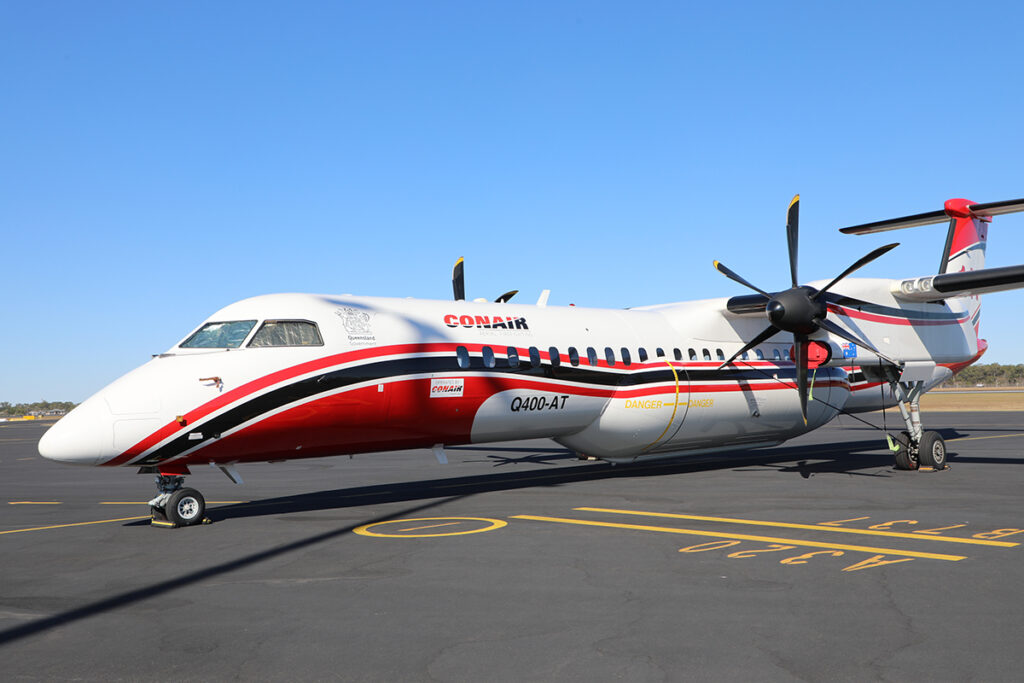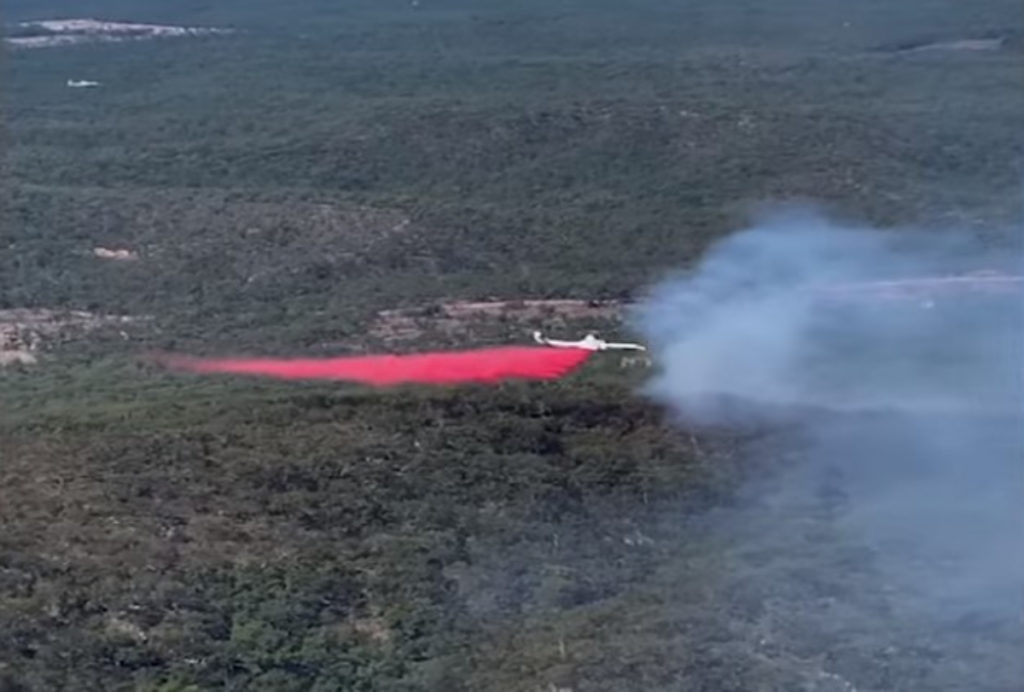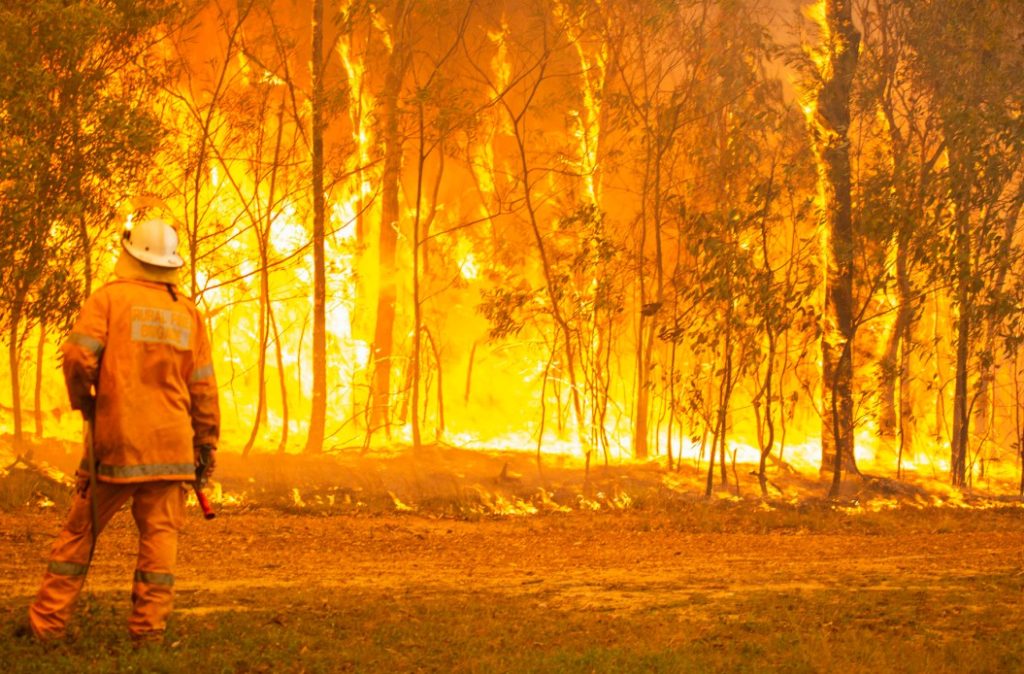
Queensland Fire and Emergency Service has announced the Large Air Tanker at Bundaberg Regional Airport is prepared for bushfire season and is urging community members to do the same.
QFES Commissioner Greg Leach was in town this week as part of a special announcement about the aircraft and said the LAT would be a valuable addition to the 150 call-when-needed planes and helicopters the state already had at its disposal.
“Aerial firefighting is an important tool in our overall approach to bushfire response,” Mr Leach said.
“It ensures valuable support for our hardworking crews on the firefront and means we can attack fires from multiple angles.”
Mr Leach said the LAT would play a strategic role in the fight against bushfires and would remain in Bundaberg for the next four seasons.
“Its role is to waterbomb ahead of a blaze to put in fire breaks that slow the progress of a bushfire,” Mr Leach said.
“It complements our other aircraft, which all have different jobs, such as waterbombing or mapping, during fire responses.
“Having these different options gives us a world-class firefighting arsenal and ensures our firefighters are provided with some of the best tools available.”

Mr Leach said the arrival of the fire-fighting aircraft in Bundaberg was a timely reminder that bushfire season was now here and residents needed to be mindful.
“Just yesterday (Monday) we experienced 20 bushfires across Queensland,” he said.
“If you are thinking of using fire to clean up around your property, it is probably now too late.
“I would encourage you to contact your local fire warden or talk to your local rural fire brigade officers about how you can clean up around your property.”
This week the fire danger rating for the Wide Bay Burnett Region has moved between ‘high’ and ‘very high’.
The rating is an assessment of the potential fire behaviour, the difficulty of suppressing a fire and the potential impact on the community should a bushfire occur on a given day.
A ‘very high’ danger rating means a fire can be difficult to control, with flames that may burn into the tree tops.
During a fire of this type, some homes and businesses may be damaged or destroyed.
Bushfire preparedness begins with you
Bundaberg Region Mayor Jack Dempsey, who is also chair of the Local Disaster Management Group (LDMG), said while there were many services on alert during bushfire season, being prepared was the responsibility of each individual.
“Council’s Disaster Management Unit continually plans and prepares under an ‘all hazards’ approach for disasters that may affect the region,” he said.
“However, all residents are encouraged to play their part and prepare themselves and their property for disasters that may affect them, including bushfires.
“Fire season in Queensland often begins in July and runs through until October, and can extend through to February, however, bushfires in Queensland can occur at any time so it is always important to remain vigilant.”
Mr Leach added Queensland’s firefighting personnel were urging residents to do their part in remaining safe.
“We can’t do it without the support of the community,” he said.
“If you haven’t written your bushfire your survival, please talk to your families about how to stay safe this bushfire season.”

Ways in which residents can prepare for bushfire include:
- Clear gutters and roof of leaves, twigs, bark and other debris. Consider installing gutter guards.
- Enclose open areas under decks and floors.
- Install steel wire mesh screens on windows, doors, vents, and weep holes.
- Point LPG cylinder relief valves away from your house.
- Check and maintain firefighting pumps, generators, and water systems.
- Seal gaps in external roof and cladding.
- Remove flammable items away from your home (such as woodpiles, mulch, boxes, hanging baskets, and outdoor furniture).
- Reduce vegetation along access paths.
- Mow your lawn regularly.
- Remove excess flammable materials such as long dry grass, dead leaves, and branches.
- Trim low-lying branches around your home to a height of two metres from the ground.
To find out more click here.
Related stories: Large Air Tanker’s Canadian crew ‘raring to go’








Perhaps if the local council allowed vegetation to be disposed of free like neighbouring councils the fire risks would be reduced.